Multifamily leadership
Money Isn’t About Money: It’s About Emotional Value, Not Economics
Try this on for size: Money is strictly a numbers game. Of course, it isn’t. For residents and team members, money is a proxy for emotional value. It’s about security, status, and trust. I sense too many C-suite executives focus solely on total income or payroll expenses without understanding the psychological currency.
Want to retain your best residents? Stop treating them as rent checks and start recognizing the emotional value they place on your community. People pay for what makes them feel secure and appreciated. The same goes for team members. Competitive wages are important, but creating and nurturing a workplace culture that values emotional well-being is priceless.
If you measure success only through income statements and balance sheets, you’re blowing the opportunities to build loyalty—both from your residents and your teams. The emotional value far outweighs the dollar signs when creating loyalty.
“Money is a trust-building tool. If you’re not using it to create emotional value, you’re wasting it.” — Mike Brewer
Shift your focus from purely economic decisions to ones that increase emotional investment. After all, loyalty doesn’t have a price tag, but it sure can drive higher returns.
Share this:
June 2024 Reading List
Books
The Power Law—Sebastian Mallaby—The Power Law unpacks a history of venture capital’s creation. I listened to this book during several long trail runs in Georgia! It’s fascinating.
Creating the Intangible Enterprise—KP Reddy—I consider KP a close acquaintance, if not a friend. We met several years ago while hiking up Camelback Mountain in Arizona. We were both attending a conference. KP’s book provides a pure definition of AI, followed by unpacking the skills necessary to thrive in the future. KP writes with a wit and wisdom you will appreciate.
Burned Out To Lit Up Cara E. Houser—I read Cara’s book as a preface to interviewing her for my MultifamilyCollective Podcast. The episode will air later. I loved Cara’s book, as it resonated with me on every level. Cara ran hard for several years, giving everything to her work until she couldn’t. And instead of tapering – she quit cold turkey and began rebuilding her life on her terms! Game on! If you are feeling or experiencing burnout – get Cara’s book and follow her directions!
The Goal – Eliyahu M Goldratt This book is an absolute classic! Set in a factory and geared around assembly line production, it unpacks logistics in a novel format. It’s part love story, part OMG, I’m going to lose my job, if…, and part leadership. I’ve read it twice, but this time around, I decided to listen to you while training for a long trail race.
Zero to One – Peter Thiel – I’m a big fan of Peter Thiel and the way he thinks about capitalism. Zero to One is a good primer for anyone starting a business to change the world. If you are in it to change the world incrementally, this book is not for you. If you want to change the world by several OOMs, pick this up today. If you don’t know what OOM is – pick this up today.
The Courage to be Disliked: How to Free Yourself, Change Your Life, and Achieve Real Happiness—Fumitake Koga and Ichiro Kishimi—I’m a fan of Alfred Adler and his Adlerian psychology, which is sometimes referred to as Individual Psychology. So, when I read this book’s description, I was immediately intrigued. The book depicts a young man wrestling with some big questions, approaching a guru intending to debunk his theories. What happens next, as click-baiters would write, is amazing!
Lectures
Finite & Infinite Games—I don’t think I was in the right headspace for this book, but I have promised myself to revisit it.
Articles
Situational Awareness – A compelling paper about where AI is headed. [Insert Mind-Blown Emoji]
AI Is Revolutionizing Multifamily Real Estate Industry – By Vibha Gore, Chief Technology Officer – Southern Land Company, United States
Daily Readers
The Daily Stoic – Ryan Holiday
The Daily Laws – Robert Green
Vitamin B for Business – Andy Bailey
New Morning Mercies – Tripp
The Daily Collective – Mike Brewer
Share this:
Mastering Responsiveness: The Gateway to Success in Multifamily Leadership
In multifamily leadership and business, responsiveness is a key skill.
Responsiveness, in its essence, is the rapid and thoughtful reaction to communication, situations, and needs within the multifamily industry.
Understanding the market pulse, residents’ unspoken needs and the evolving landscape of real estate technology is also key.
Considering responsiveness in communication, the expectation for swift replies has never been higher. But it’s not just about speed; it’s about the quality and thoughtfulness of the response.
It means addressing inquiries and concerns promptly and anticipating future needs and questions.
It’s about critical thinking that demonstrates understanding, empathy, and foresight.
Responsiveness is also considered in the customer experience. The multifamily space is changing constantly, driven by shifts in demographic trends, the economy, and innovative tech.
Leaders who respond swiftly to these changes, adjusting strategies and operations accordingly, stay ahead of the curve.
Responsiveness related to tech advancement is another critical aspect.
The integration of PropTech in the multifamily industry has changed how properties are managed and how residents engage with their living spaces.
A forward-thinking approach streamlines operations.
It also appeals to a tech-savvy resident base, enhancing retention and attraction.
Consider the internal dynamics of a multifamily property management company. Responsiveness within a team—recognizing achievements, addressing concerns, and fostering a culture of open communication—cultivates a positive work environment.
It encourages innovation, as team members feel heard and valued, leading to a more engaged and productive team.
Who or what do you need to respond to – right now?
Share this:
The Art of Mastering Tactics: Beyond Strategy’s Ease
I think strategy is straightforward; tactics are where the real challenge lies.
Strategy unfolds in the mind.
It’s a broad, ambitious, high-level roadmap.
Tactics, on the other hand, are the boots on the ground.
They’re the daily battles, the seemingly inconsequential but critical micro-decisions that collectively steer us toward our desired outcome.
Each tactical move requires meticulous thought, adaptability, and a deep understanding of the landscape.
Strategy is the horizon way ahead; tactics are the roadsigns that help us navigate the intricate details of today.
Tactics keep us on the rails.
This distinction is vital.
Many can dream big, but it’s the execution, the relentless pursuit of those tiny, actionable steps, that truly defines success.
Understanding this secret to execution can transform visions into realities.
Share this:
January 2024 Reading List
I have decided to try something new going forward. I read a lot of books and articles throughout the year, but I usually don’t share most of them. Therefore, I thought it would be interesting to share my monthly reading list and provide a brief takeaway from each book or article.
A Minute to Think—Juliet Funt: My takeaway: Be protective of your time and intentional about setting time aside for contemplation.
Hidden Potential—Adam Grant: My one-word takeaway is character. My more wordy version is character is everything, and everything is about building character. We must be intentional about building it, and Adam’s book gives you a great framework.
The Surrender Experiment – Michael Singer: I can’t put my finger on it but Michael’s books resonate with me. His writing is simple, straightforward, honest, and wholesome. There never seems to be a motive to sell you on his belief system or way of life. He just puts it out there for you to decide. I like that.
Million Dollar Weekend—Noah Kagan: I have followed Noah for years and love his brash, no-nonsense approach to life and building businesses. Million Dollar Weekend is a blueprint for setting up a business, with tons of practical application.
The Daily Pressfield – Steven Pressfield: Steven is one of my all-time favorite authors. Yes, this is a Daily Reader. Yes, he just released it a couple of months ago. Yes, I read it in a couple of weeks. Oops. It’s that good.
What do you think of the list? What book(s) are you reading right now? Curious: why did you choose to read them?
Share this:
- Page 1
- Page 2
- Page 3
- Interim pages omitted …
- Page 67
- Go to Next Page »

